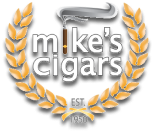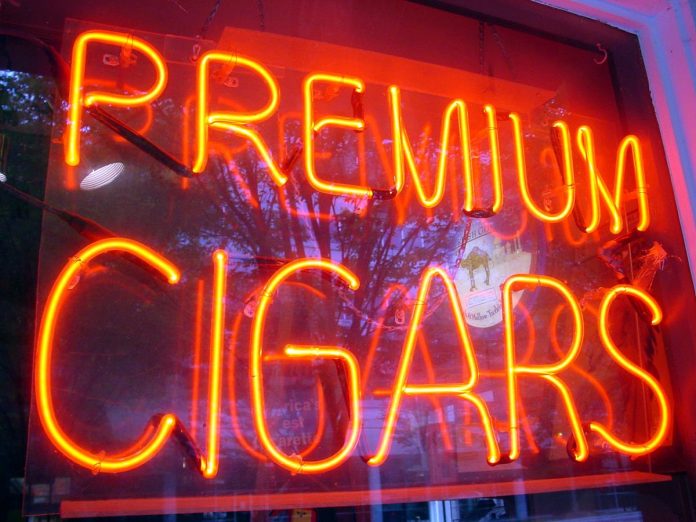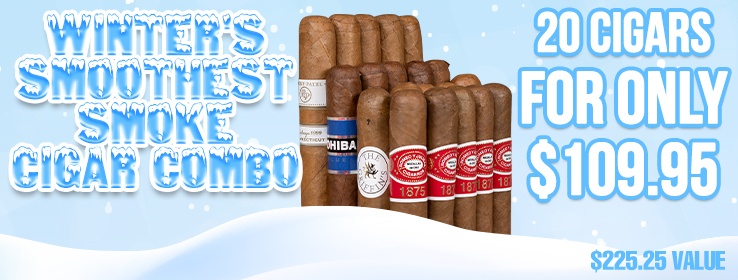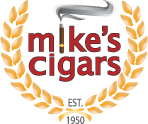An Introduction to Cigar Wrapper Tobaccos
I hate to start an article with a bad pun, but, it took a while for me to wrap my head around how to best approach the topic of cigar wrapper tobaccos and simplify what is in fact a very complex topic.
In Part One of this series we discussed the minimum information needed to make an informed decision when selecting premium, handmade cigars and introduced the idea of note keeping. In Part Two, we expanded on this by learning how to “read” cigar leaf information by identifying country of origin, varietal, and other data and what this information can teach us about a cigar.
Now in Part Three, we will begin our study of the three component parts of a premium cigar; the wrapper, the binder, and the filler. Each different component of a premium cigar has a unique roll it must fulfill. Similarly, each different component tobacco has a unique set of standards and requirements it must meet before it will be used in a premium, handmade cigar.
More so than any other type of cigar tobacco, cigar wrappers are the topic of great debate. Many feel that the wrapper contributes the majority of the flavor and aroma to a cigar others disagree giving this responsibility to the filler blend. There are those cigar smokers who are devotees of a single wrapper type, say, Shade grown Connecticut-seed (also known as the “light ones…”) while others will only smoke a Maduro wrapper. Many smokers favor a wrapper from one particular growing region such as a Mexican grown San Andres.
When I look at a cigar, in order to ascertain its character, I start by looking at and evaluating the wrapper leaf data I have collected. At a minimum, I will search out the following three pieces of information which I believe necessary:
- Kind
- Color
- Country
By learning this data, the aficionado can begin to narrow their cigar searches and concentrate on brands that meet the demands of their individual taste. By breaking down what we know about a cigar’s wrapper leaf we can learn a good deal about what the leaf will taste like, smell like, and even smoke like. When this knowledge is combined with an understanding of binder and filler leaves, the aficionado can predict with fair accuracy the character of any given cigar. This ability is what defines the true cigar aficionado, and it’s this ability that will save you countless dollars as you explore the wide variety of premium cigars available today.
When we talk about the kind of leaf used to wrap our favorite premium cigar we are talking about a varietal of black tobacco. Most experts agree that there are five “progenitor” species of black tobacco. Nearly every variety of premium cigar tobacco in use today has been developed by hybridizing one or more of these basic five tobaccos:
- Habanesis species: The “habanesis” species are the “native” Cuban tobaccos and their hybrids. Leaves in this category include Connecticut Shade, Corojo, Criollo, Habana2000, Piloto Cubano, San Vincente, and others. The generalized “habano-seed” wrappers also are Habanesis species. Because there are so many varietals, it is difficult to describe the qualities of all as one. Wrappers vary from smooth and creamy Connecticut Shade-grown to full flavored Corojo wrappers.
- Broadleaf: Broadleaf tobaccos are known for large, thick leaves. Due to their size and thickness, Broadleaf wrappers are most frequently used to create “maduro” wrapper leaves through an extended fermentation which results in an oily, dark brown wrapper leaf. Broadleaf is grown across the cigar countries, but is most notably grown in the US (Connecticut, Pennsylvania, and Maryland) and Mexico. Broadleaf maduro wrappers impart a smoky, woody, sweet character to a cigar. Tastes of chocolate and coffee are frequently noted by smokers of these cigars.
- San Andres: The San Andres tobacco seed is a Mexican strain transported during population migrations from South or Central America thousands of years ago. Grown principally in the Las Tuxtlas area of Mexico the wrapper is often defined by its color as in “San Andres Morron” and “San Andres Negro” wrappers. San Andres seed wrappers tend to add a dry, spicy component to cigars and, if grown in Mexico, a characteristic “Mexican” flavor which is loved by many and despised by others.
- Bahia: Mata Fina, Mata Norte, and Arapiraca are all varieties of Bahia seed tobaccos. Grown from native seeds in Brazil, these wrappers are frequently used for “maduro” wrappers. These wrappers tend to have a dry, sweet, earthy quality with a slight spice and a medium body.
- Sumatran: Transplanted by the Dutch in the 15th and 16th centuries, Sumatra-seed tobacco has developed in sufficient isolation to be considered its own species. Besuki and Jember are the two main varietals grown today and contribute a spicy, sweet character to cigars. Cameroon cigar tobacco is grown in West Africa from seeds originally of Sumatran origin. For this reason, Cameroon wrappers are known to contribute a sweet, spicy character to premium cigars.
The color of a cigar wrapper leaf is derived through several factors. Beginning in the field, the varietal of tobacco grown is the first factor affecting the end color of a wrapper leaf. After the wrapper leaves are harvested, different methods of processing the leaves (fermentation, aging, etc.) have added impact on the color of the finished cigar wrapper. These factors have also a great impact on the flavor of the wrapper leaf.
Cigar wrapper leaves come in a spectrum of colors ranging from pale green to near black. In fact, in Cuba, cigars are routinely sorted into 64 color gradations based on the tone of their wrappers. The color of the wrapper leaf on a cigar can provide insight into its tastes, aromas, and smoking qualities. The basic wrapper colors used by most manufacturers outside Cuba today are:
- Candela, Double Claro, American Market Selection (AMS) or Jade: For well over a century, this was the cigar wrapper of choice in the United States, leading to it being referred to by many as American Market Selection. Candela wrappers get their green tones through a drying process that uses added heat rather than ambient temperatures to dry the leaves. By forcing the drying process, the chlorophyll in the leaves does not have a chance to breakdown as it does in leaves that are naturally dried and aged. Candela wrappers are very, very mildly flavored with little aroma. When considering a Candela wrapped cigar, it is important to consider the binder and filler blends than with other wrappers to ascertain the true nature of the cigar. Rocky Patel recently added The Edge – Candela to his already vast portfolio.
- Claro: Claro wrapper leaves vary from light yellow-brown to light tan in color. Typically mild in taste and aroma, Claro wrappers are frequently found on mild bodied cigars, although this is not always the case. Connecticut Shade grown wrapper leaves are typical of this coloration. Earthy and creamy are two words often associated with Claro wrapped cigars. The Perdomo 10th Anniversary Champagne uses a stunning yellow-brown Claro wrapper.
- Colorado Claro or English Market Selection (EMS): A more flavorful and aromatic wrapper leaf, Colorado Claro or English Market Selection leaves are frequently lumped together under the term “Natural.” Much spicier than the Candela or American Market Selection wrapper, these leaves were favored by European cigar aficionados for years, hence the name English Market Selection. Punch cigars are a great example of a brand that employs some of the finest EMS wrapper leaves in the business.
- Colorado and Colorado Rosado: The Colorado and Colorado Rosado wrapper leaves have a reddish hint to the leaf, accompanied by more oils, not present in a Colorado Claro leaf. More aromatic and rich than the Colorado Claro leaf, the Colorado and Colorado Rosado tones are by-products of the aging process. Certain leaves attain these colors during the aging process and are sufficiently different in character to be separated from the Colorado Claro leaves. The Corojo and Habana2000 varietals are known for producing beautiful Colorado and Colorado Rosado wrapper leaves. The Partagas Spanish Rosado line, as the name implies, uses a beautiful rusty brown Colorado Rosado wrapper grown in the San Augustin Valley of Honduras
- Colorado Maduro or “Maduro”: Colorado Maduro wrapper leaves, or Maduros, have seen a resurgence in popularity in recent years. Maduro cigar wrapper leaves are the product of a combination between thick and hearty leaves and an intense curing process. Maduro wrappers are fermented longer and at higher temperatures than other wrappers. It is due to the intensity of the fermentation that maduro wrappers call for the thickest of leaves. The extended fermentation process not only creates a dark color, but as the leaves dry allows the carbohydrates in the leaves to further decompose forming sugars resulting in the characteristic “sweetness” of a Maduro wrapper. More than any other wrapper, Maduro wrappers contribute flavors and aromas to the smoke of the cigar with a characteristic spicy-sweetness and woody and spicy aromas. The Camacho Triple Maduro and the A. Turrent Triple play are examples of high end premium cigars composed entirely of maduro leaves; wrapper, binder, and filler, for maximum Maduro pleasure.
- Oscuro or “Double Maduro”: A darker shade of Maduro, the Oscuro wrapper approaches near black tones. Achieved through extra fermentation, over and above that of a Maduro wrapper, the Oscuro wrapper is gaining popularity. Found on cigars such as the Rocky Patel “Patel Brothers” line as well as several General Cigar lines, Oscuro wrappers offer a more intense degree of the same flavors and aromas found in a typical Maduro wrapper. Think of Oscuro like a Maduro on steroids and you get the idea. The Partagas Black Label line features a maduro leaf that is so dark it can be called an Oscuro.
The final factor that can affect a cigar wrapper leaf is the country the leaf was grown in. When one considers that by the time the cigar wrapper leaf has been processed all that remains is the vegetal structure of the leaf (cellulose), water, and the mineral components it becomes more evident how the same seed grown in a different area could have such a different flavor and aroma.
The majority of cigar tobaccos are grown in river valley regions where nutrients and minerals are concentrated. These nutrients are converted by the tobacco plants as they grow into the basic plant structures such as stems and leaves. When harvested and processed, water is removed from the tobacco leaves resulting in a concentration of these plant and mineral compounds. As a cigar is smoked, the plant materials are consumed by the burning cigar leaving behind the mineral components in the form of the ash.
The differing concentrations and combinations of these critical nutrients lead to differing tastes and aromas from cigar wrapper tobaccos. Cigar wrappers are grown in almost all major cigar tobacco producing nations, including:
- Honduras: Tobaccos from Honduras are considered “strong” by most however most varietal, including Connecticut Shade, are grown in Honduras. Honduran tobaccos are known for a spicy component and are considered by many to be the closest in character to Cuban leaf.
- Nicaragua: Nicaraguan tobaccos are known for a deep, woody characteristic with a very aromatic presence. Nicaraguan tobaccos have improved steadily over the last three decades and are now found in some of the most sought out cigar brands in the world. Many varietals of wrapper leaf are grown in Nicaragua.
- Dominican Republic: Be sure not to confuse a Dominican cigar with a Dominican wrapper. Although Dominican produced cigars are known for being mild, the same cannot be said of Dominican wrapper tobaccos. A great many varietals are produced in the Dominican Republic including the same varietal grown in Africa to produce Cameroon wrappers. One of the most notable Dominican wrappers can be found on the Fuente Fuente Opus X line.
- Brazil: When most cigar smokers think of Brazilian wrappers their minds go to Maduros, and with good reason. The varietals grown primarily in Brazil, including Mata Fina and Arapiraca, produce fantastic Maduro wrappers. Brazilian Maduro wrappers tend to be very aromatic and flavorful with a dark color and oily, bumpy texture. Brazilian Maduro wrappers are, to my taste, not as sweet but rather contribute a headiness to the smoke other Maduros do not. The C.A.O. Brazilia line features one of the darkest and oiliest Maduro wrappers I’ve ever seen.
- Mexico: Mexican cigar wrappers, like other Mexican grown cigar tobaccos, tend to be something you either love or hate. Mexican cigar tobaccos, grown principally in the Las Tuxtlas region, have a very characteristic flavor and aroma profile. Dry, earthy, spicy and strong are all attributes I’ve experienced with Mexican tobacco. Mexican San Andres Maduro wrappers tend to be much less sweet than other Maduros, while still adding that “Mexican” flavor. Many premium cigars feature Mexican grown binders, many of which are downgraded wrapper tobaccos. Some cigar companies are experimenting with other varietals such as Criollo in Mexico.
- Ecuador: Ecuador, due to its geographic location and topography, is a quickly evolving wrapper leaf producer. In the last decade or so, the cigar industry has seen a proliferation of Ecuadorian wrappers. Varietals typically “shade grown” under cloth in other countries are being grown in Ecuador under the natural shade of the cloud cover prevalent there. This cloud cover leads to cost savings for growers by eliminating the costs and labor associated with typical shade growing. These economies are then conferred to the smoker in a lower cost per cigar. Many varietals are being grown in Ecuador most notably Connecticut Shade and Sumatran wrappers. Ecuadorian wrappers can be found on a wide selection of premium cigars including the Oliva Serie V Melanio line which uses a superb Ecuadorian Sumatra-seed leaf.
- Indonesia: Indonesia is an island group near the equator in the Pacific Ocean, north of Australia. Black tobacco seeds were introduced to the islands by the Dutch in the 15th and 16th century and have developed in isolation there since. It’s this genetic isolation that has led to Indonesian, or Sumatra seed, tobaccos being considered a unique progenitor species. Sumatra seed tobaccos have a very spicy yet slightly sweet characteristic that is loved by many cigar aficionados. For a long time Indonesian wrappers were associated with lower quality cigars and this unfortunate association still persists to a degree today. Indonesian cigar tobaccos can be outstanding and are found on several high end premium cigars including the very popular Romeo y Julieta 1875 line and several Drew Estate Acid cigars. Indonesian binders, which are usually downgraded wrappers, are also used on a great many premium cigars.
- Cameroon/West Africa: Of all the wrapper tobaccos produced worldwide, Cameroon wrappers are among the most sought out, most difficult to produce, and most expensive there are. Grown in jungle covered river valleys in the African nations of Cameroon and West Africa, high quality Cameroon wrapper leaves require intensive investment and great manual labor to produce. Known for a very characteristic caramel-sweetness with substantial spice, Cameroon wrappers are featured on some of the most popular premium cigar brands in the world including the Arturo Fuente Hemingway line, Partagas, and Cohiba.
- Costa Rica: A small Central American nation situated between Nicaragua to the North and Panama to the South, Costa Rica is becoming well known for its cigar wrapper leaves, although it is still not a major producer of cigar tobacco. Costa Rican Maduro wrappers are slightly sweeter than other Maduros with a mild spice and deep, earthy tastes.
- United States: The two principle black tobacco growing regions in the United States are located around the Connecticut River Valley near Hartford, Connecticut and extending south into Pennsylvania. The two most prevalent varietals grown here are US Connecticut Shade and US Broadleaf. While the same Broadleaf tobacco is grown in both Connecticut and Pennsylvania, Pennsylvania Broadleaf is sufficiently different in flavor and aroma to be named separately from Connecticut Broadleaf. Connecticut Shade wrappers add a characteristic creamy texture to a cigar while adding an earthy, clay-like taste. Connecticut Shade wrappers are found on many of the world’s leading premium cigars such as Macanudo, Davidoff, and Montecristo. Connecticut Broadleaf wrappers can be found on a wide variety of cigars while Pennsylvania Broadleaf is less common. Connecticut Broadleaf wrappers, downgraded, are featured as binders on a number of premium cigars.
I hope you’ll read or re-read Part One and Part Two of this series and the information contained there. Hopefully, some of the pieces will start falling in place.
Your homework: make some notes about the cigars you’ve smoked recently; their wrappers, binder, and fillers, and where they came from. Add some tasting notes about how the leaves worked together to create a unique cigar experience.
Ask yourself the following questions:
- Were your cigar choices mild, medium, or full bodied?
- Did you smoke cigars of only one wrapper variety?
- If you smoked several cigars with different wrapper varieties, which one was your favorite?
- Who made your cigars and have you tried other cigars by the same manufacturers?
- What was your overall impression of each cigar?
- Would you buy any of these particular cigars again? Why? Why not?
These are some of the questions an experienced aficionado asks of each new cigar brand they sample. Knowing the answers to these questions can guide the aficionado to other cigars with characteristics matching their individual tastes.
Through research and note keeping you can hone your cigar knowledge and develop the skills needed to properly evaluate a premium cigar before you buy. And, by knowing what you like you can avoid buying what you don’t.





